Archery Hunting Tactics for both Public and Private Lands
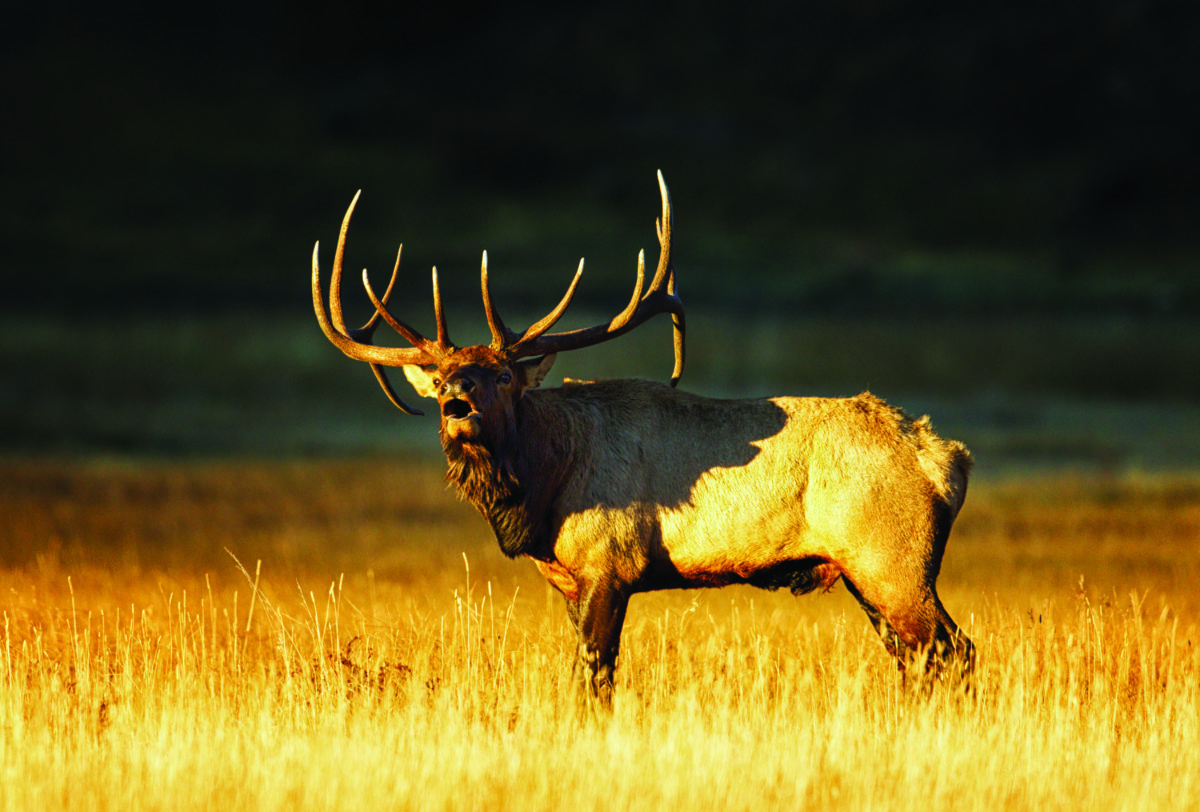
Bowhunting combines unique appeal and unique challenges. On one hand, it honors a timeless tradition that requires a tremendous amount of skill. On the other, the physical demands of drawing a bow, the practice and the shorter shooting distances for hunting big game with a bow can create more barriers to entry. In anticipation of the upcoming archery season, here are a few pro tips to better prepare, practice and persevere – whether you’re hunting on public or private lands this season.
Spend Time on Pre-season Preparation
Choosing the right bow, correct draw length and draw weight is an important place to start – archery is definitely not a one-size-fits-all endeavor. If you’re new to it, head to your local sporting goods store to be properly fitted by an experienced bow tech. Beginners often benefit from learning with a compound bow – one that uses a cam system to make holding & aiming easier – versus a traditional recurve or longbow that doesn’t offer relief at full draw.
Given the risk of wounding an animal, practice is paramount when it comes to bowhunting. Buying a foam block or compressing enough bails of hay for target practice works well. Or you can take it to a more sophisticated level by setting up 3D Big Game Targets in real life scenarios across acres of your land or hike a 3D course on public land to practice.
Have the Right Equipment
Help ensure success by dressing the part and heading out with the proper equipment. Here are some key items for every bowhunter:
- Bow, arrows and broadheads
- Release and arrow rest
- Bow sight and extra pins
- Range finder plus extra battery
- First aid kit
- Headlamp plus batteries
- Wind checking device
- Field dressing kit
- GPS or Smartphone AND compass
- Game calls
- Camo clothing (Check out True Timber)
- And Great broken-in Hiking Boots!
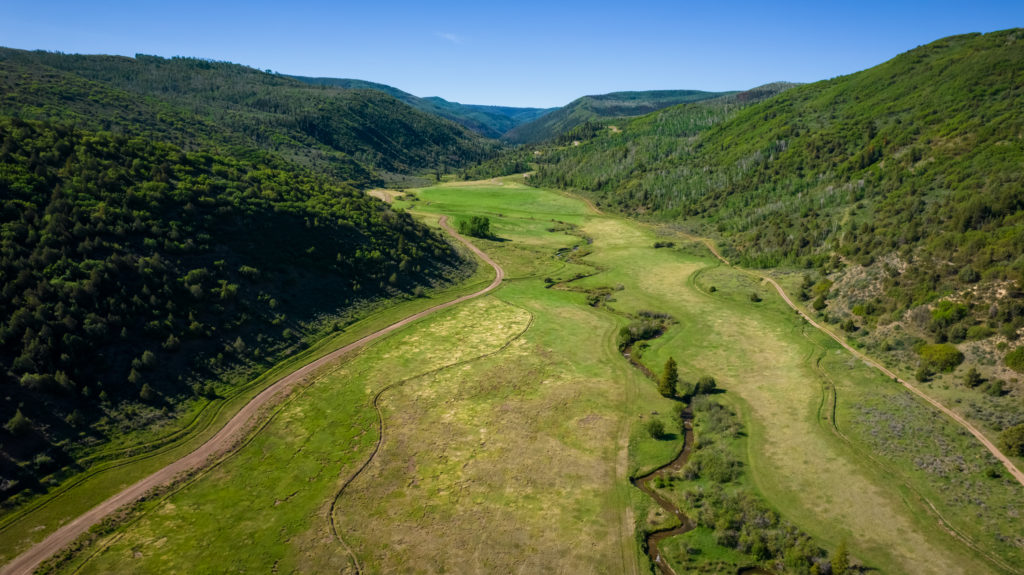
Learn the Animals’ Corridors and Patterns
Trail or game cameras can be helpful in learning how deer and elk are moving through your property and the public lands you want to hunt. (Note: if installing game cams on public land, make sure to check your state’s regulations on when, how, where and if they can be used – these regulations vary from state to state.) Cams can help identify where game might bed or feed, giving you a better idea of where their location or general habits come opening day.
Pro Tip: Speaking of opening day, it’s best to keep human interaction minimal in the week or two leading up to it. During this time, leave the area alone to help foster an environment in which big game feel safe to bed and eat freely.
Scout – Both Digitally and In-person
It’s a good idea to begin with researching the area in which you’ll be hunting. For public lands, digital resources such as Google Earth, Google Maps, and apps such as Caltopo and onXmaps can be incredibly valuable. Invest time in understanding the greater region, neighboring properties, geological features, and areas of private land that might help you glean insight into the animals’ behavior.
Then take to the meadows, mountains, hills or basins to look for signs of big game or the animals themselves. Learn what to look for when you’re glassing, such as small sections of hide or antler, the twitchy movements of a tail or ear, and moving brush.
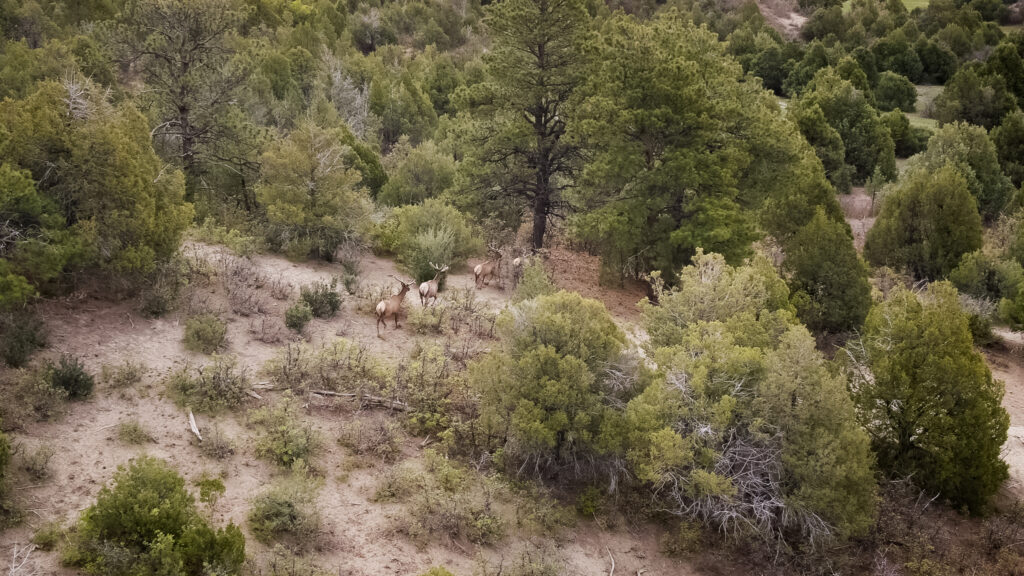
Mind the Wind
Even the most extensive preparation doesn’t matter if you’re battling unfavorable wind or weather conditions, so learn seasonal wind, daily thermals, and weather patterns for your public or private hunting land. Always having the wind in your favor is key to bowhunting success. Wind patterns help determine where you should stage to ensure breezes and gusts don’t blow your cover.
ProTip: It’s best to always have a wind checker to help confirm wind behavior in the field. In a pinch, tie on a short piece of yarn or thread to the bottom of your bow!
Know Where You Stand with a GPS with Hunting Map Layers
When hunting on private land, GPS mapping is less critical, however this can be a helpful tool for sharing info with your hunting party. For those venturing into public land, it’s a vital tool that helps inform your hunt from beginning to end. GPS mapping allows you to map the area and mark waypoints in the field – everything from the trailhead, to fresh sign, game trails, or where your shot was taken. Additionally, apps such as onX show private land boundaries and detailed owner information that can be critical information accessible right from your phone when needed.
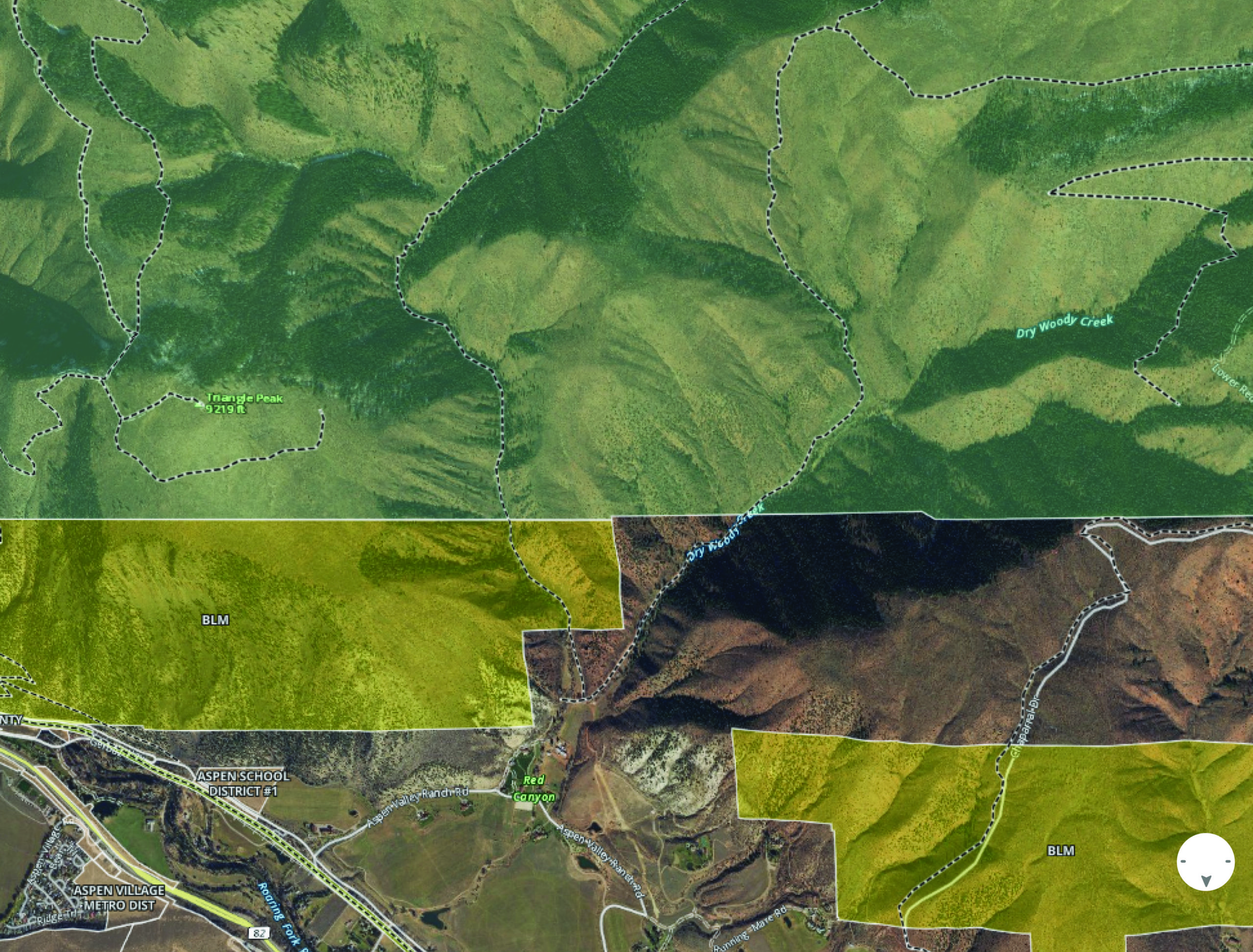
Master the Art of Stealth
Being able to move through the field without creating dramatic disturbances helps ensure your bowhunting success. Learn how to be still, observant, and patient, moving low when needed, to lessen disturbances that might cause a ripple effect that pushes the herd out of the area. While this skill is not easily mastered, each time you venture into the woods – try to make it a goal to make as little disturbance as possible. Since, you cannot always guarantee that other hunters won’t disturb the game you are seeking on public lands – consider looking into the small steps you can make today to purchase the hunting property of your dreams!
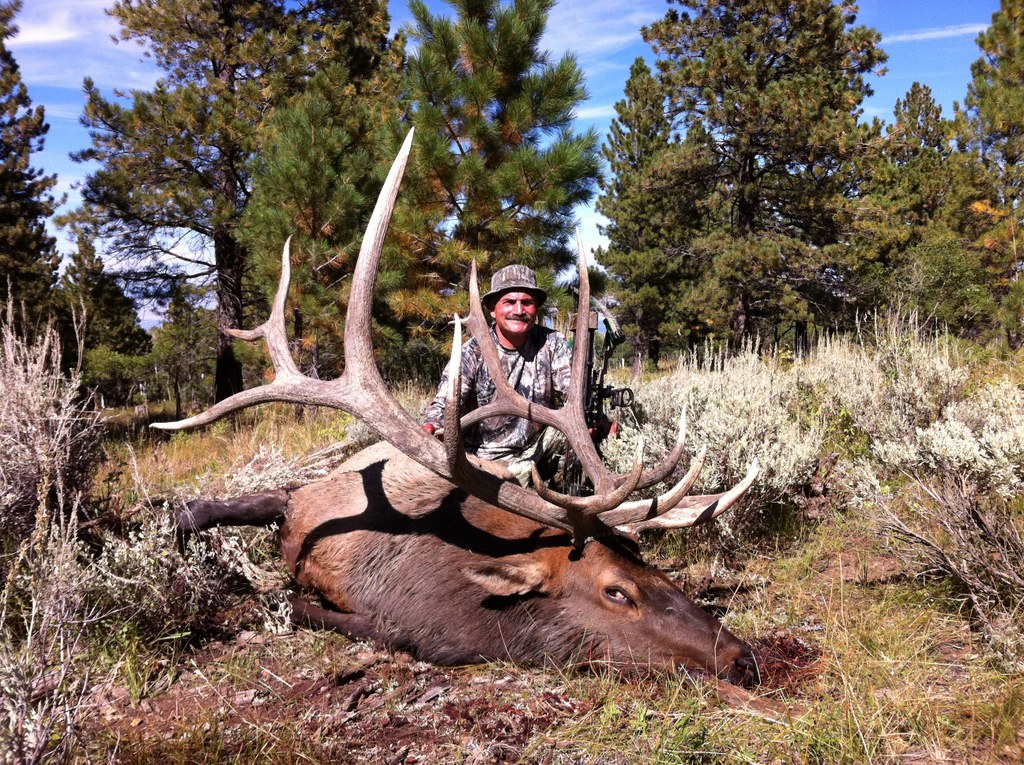
Turning Your Old-Growth Property into a Deer Sanctuary
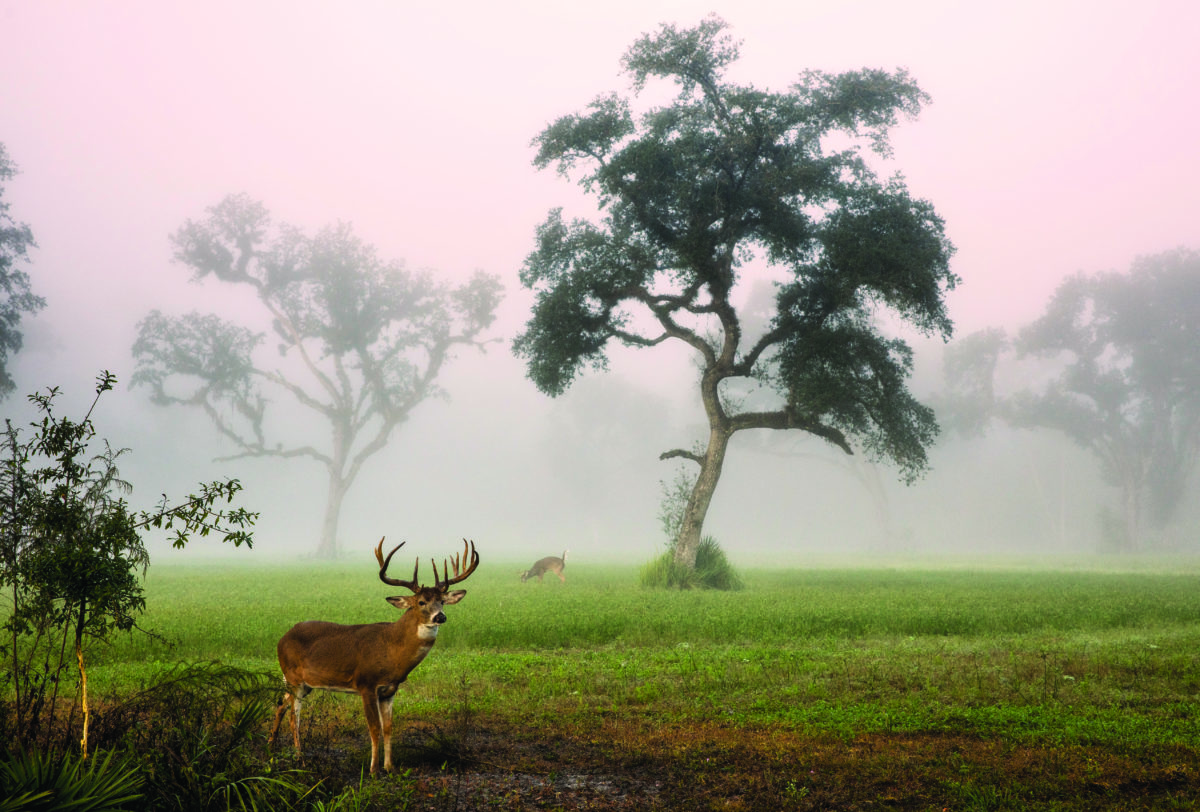
One of the biggest rewards of owning Hunting land is the coexistence of owner, wildlife and natural resources.
Learning how to mature your property to improve opportunities for deer hunting and migration is an important part of hunting land management – and enjoyment! With fall comes the promise of big bucks and a year of deer meat, so long as the deer have good reason to move through your property.
Here are some things to consider when priming your land for long-term success and an improved environment that allows big game to thrive on your hunting property. Before you begin making ad hoc changes to your land, draw up a strategic plan that establishes the locations and co-existence of each of the elements below:
Food
While deer feeders and salt licks seem like an easy and enticing way to encourage deer onto your property, they’re not a long-term solution and add no value to your land’s ecology or forest health. It’s much better to integrate natural forage into your forest for a consistent nutrient source. A great initial step is to thin your trees, removing sick, weak or otherwise undesirable ones. This benefits in two ways – it opens up small corridors through stands of trees that allow deer to wander through with more ease and it lets sun rays reach the forest floor, contributing to the growth of deer favorites such as grape, honeysuckle, blackberry and others.
You can also add food plots throughout, making sure to locate them in or near cover such as wooded areas and swamps. It’s also important to adhere to the 60:20:20 rule – 60% cool-season perennials; 20% cool-season annuals; and 20% warm-season annuals and grasses. Seed mixes are available; you’ll just want to be consistent with weed management, mowing and fertilization as necessary.
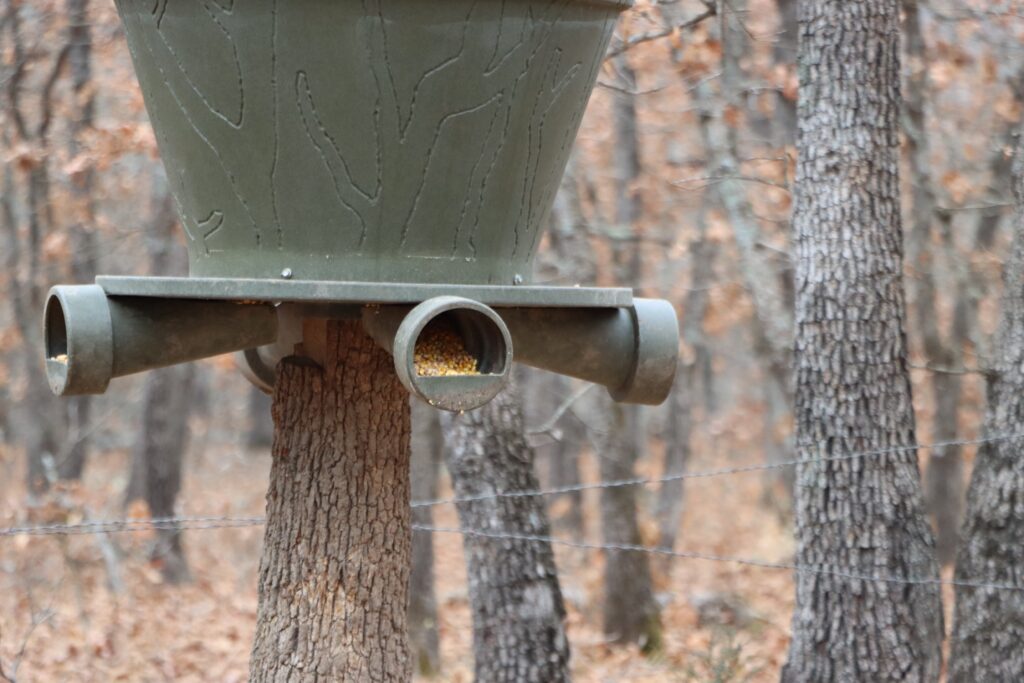
Water
Of course, water is as important as plenty of food. If you need to establish a water source or sources on your property, you can build a small water hole, add a stock tank, kids pool or other rain collection vessel, or create a small dam or watering hole in a river or stream. Again, make sure these water sources are maintained and near a place that offers cover.
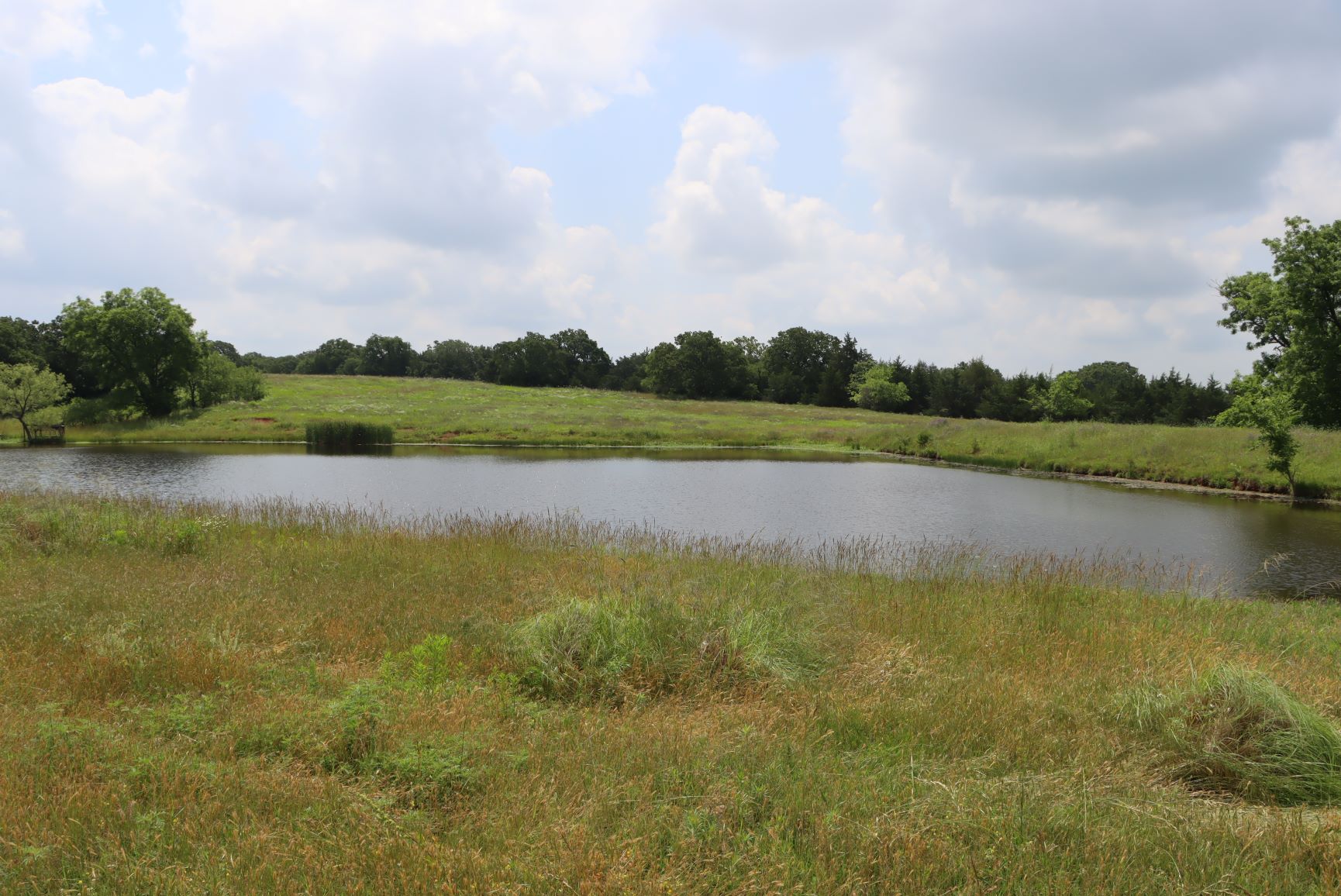
Cover
While good food and water might invite bucks through your land, keeping them there requires efficient cover. A good rule of thumb is “bed high, move low” meaning bucks like to bed higher on the property and then move through lower trees to feed and chase does. Forest management practices, like the ones mentioned above, will largely contribute to creating safe, healthy areas of cover for bucks. If you want to establish additional coverage on the property, find a spot away from any human activity – then cut down select small trees and limbs, hinge-cutting some, to help manage the overgrowth. You can also use these trimmings to create a fort-like area for additional ground coverage.
Corridors
Natural pathways such as brushy hollows, open strips and ditches offer bucks a “safe zone” to move between their bedding areas and feed fields. If these don’t occur naturally on your land, it’s easy to create them. They don’t have to be highways – 25 to 50 feet is more than sufficient. Apply the same thinning and bed-making rules to establish linear paths and trails throughout the property, naturally winding them between bedding, doe and feeding zones. Additionally, be considerate of the wind patterns that are consistent on your property before designating your planned corridors.
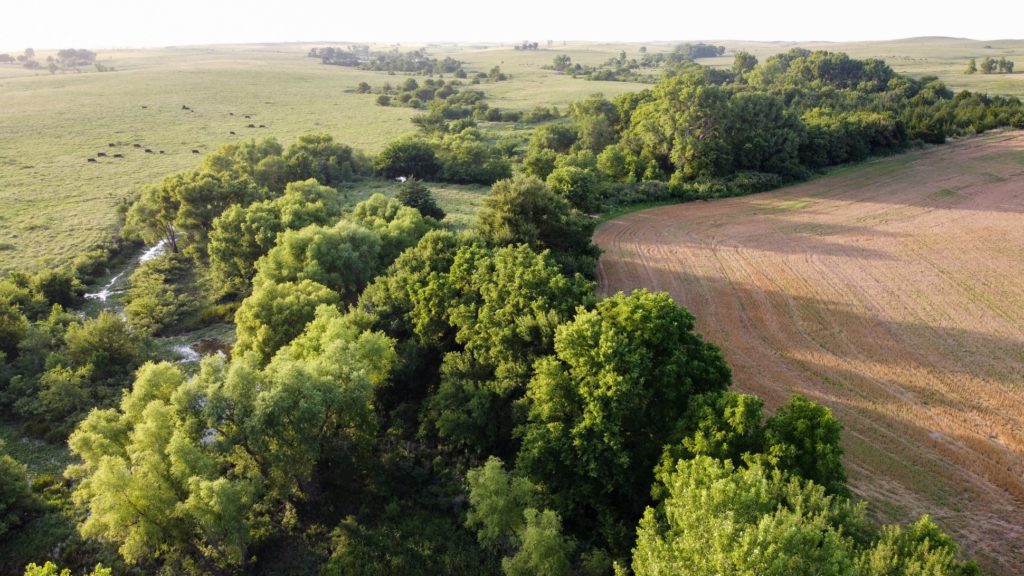
Weather Havens
If your property is subject to early-season freezes and large snowfalls, it’s important to plan for winter deer habitat. Diversifying your forest with endemic trees that shield from harsh winter weather, such as cedar, pine, spruce and hemlock, is important. Since deer change their behavior to survive the winter – they are typically less active to save energy, so you should account for this by including more shelter on the property.
Staging
Consider staging friendly transition zones between travel corridors, fields and food plots. A brushy edge along a field or food plot is ideal. If this doesn’t occur naturally on your land, plant shrubs in these areas and combine with felled trees from other forest thinning activity. Create a 15- to 20-foot buffer zone of bushes along the field’s edge.
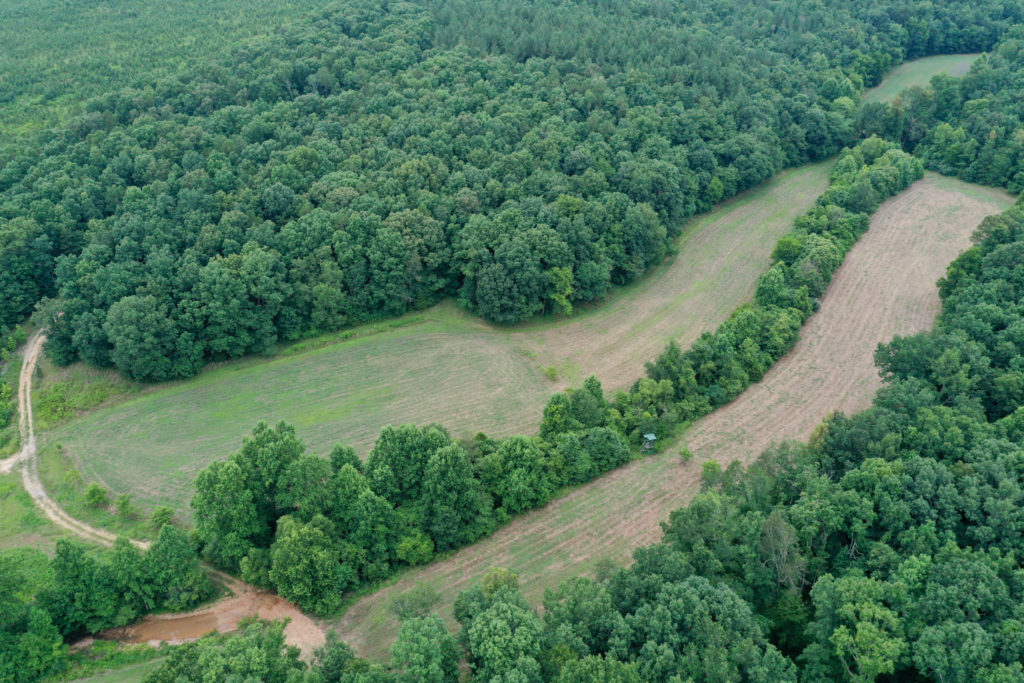
Deer Stands and Blinds
It’s important to keep stand approach trails unobstructed. Remove sticks, logs and other noise-making elements and trim back brush that might absorb smell so you can reach your stand silently without detection. Also trim back branches that might get in the way of shooting lanes to increase your shot opportunities. Additionally, you can create small piles of cut trees and branches that prevent the deer from seeing you as you near your stand.
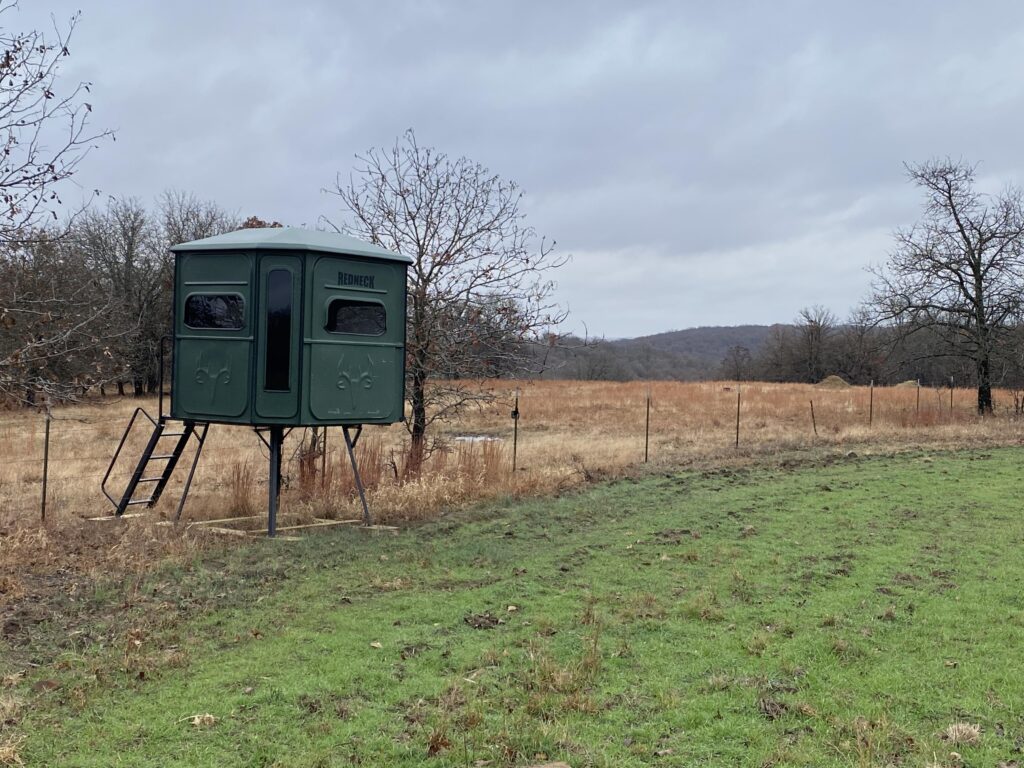
For additional insight into finding and maintaining the perfect deer hunting paradise, reach out to the agents at Hayden Outdoors. Our expert team offers extensive experience in ranch management and large-acre hunting real estate sales, connecting you with a hunting property that will serve generations to come.
Own the Hunting Property of Your Dreams — Small Steps You Can Take Today
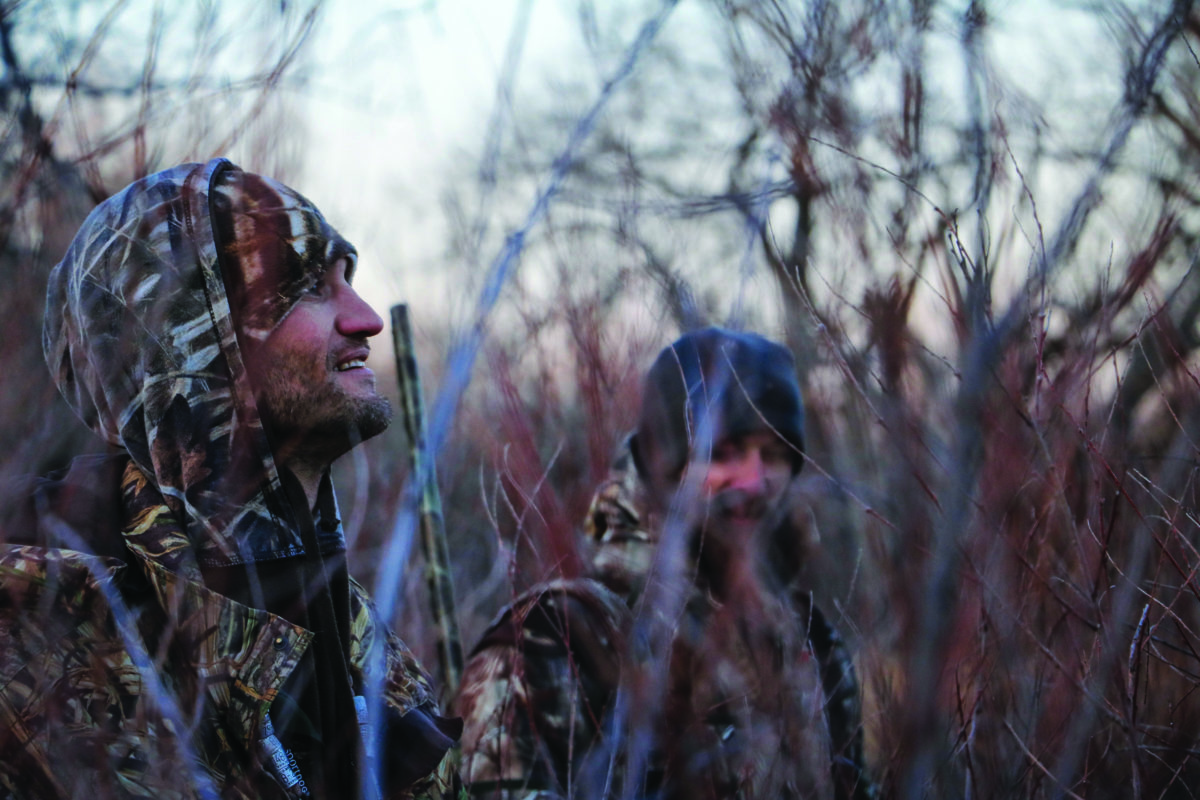
Ask the avid hunters in your life where they harvested their trophy deer or elk and you might get this answer: “In the Nowhere Region of the Never-tell Mountains.” Prime public hunting land is often considered sacred to sportsmen and sportswomen and for good reason – there are plenty of other people out there exploring those spaces looking for the same thing.
But what if you owned your hunting property? You determine how many people can hunt on the land. You know the prime terrain where the animals graze, gather and rut. You get to discover other hunting opportunities, such as ducks, turkeys and pheasants. Sound like an unrealistic daydream? Actually, purchasing your own hunting property is possible, especially when you consider these small steps.
Step One: Put the dream down on paper.
Which is to say, outline your goals for the property. It’s important to articulate what you’re looking for in a hunting property. Deer? Elk? Waterfowl? Upland Birds? Are there good water sources on the land? What about food sources and areas of protection from predators? Be realistic about how remote you want to be, current infrastructure available such as cabins, a well or areas for a hunting camp, habitat improvement opportunities and migration corridors.
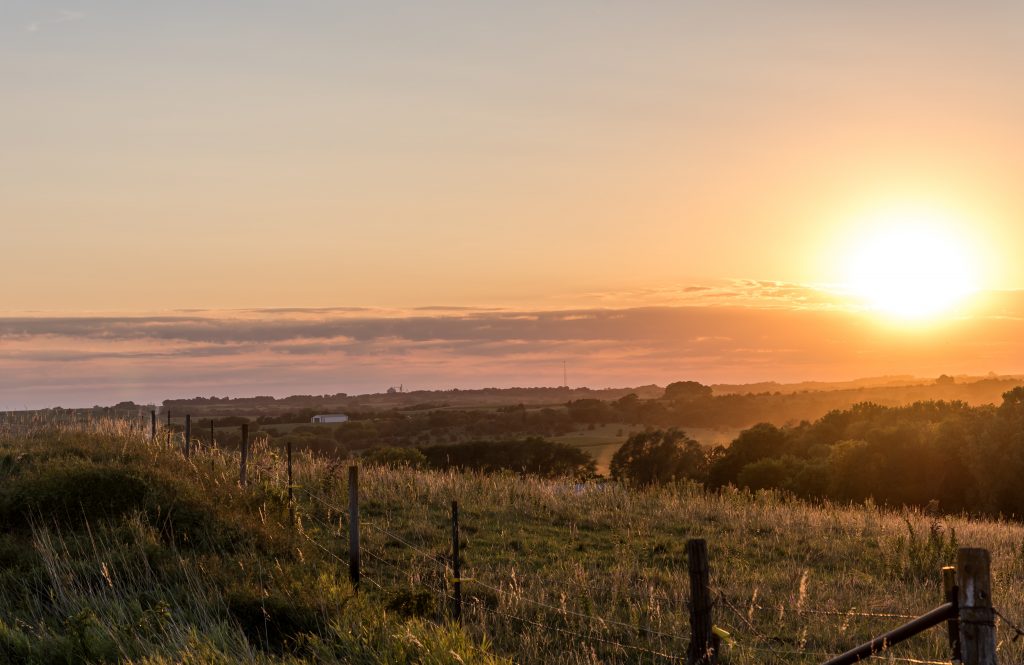
Step Two: Adjust the dream accordingly.
Which is not to say you need to make drastic compromises to turn your hunting land purchase into a reality. But it is important to be realistic about the fact that your first hunting property might not be your ultimate dream property, and that’s okay. In fact, it can be an excellent way to help you invest and work toward an end goal of owning more acreage down the line. For now, have a good grasp on how much land you can afford and effectively manage.
Step Three: Calculate your down payment and financing.
You will need approximately 20% of the total property cost as a down payment, or $20,000 on a $100,000 piece of land (for example). While it might seem like a lot now, small monthly savings can add up quickly. Once you have down payment funds secured, it’s important to calculate how much your monthly payment will be using a mortgage calculator so you don’t become over extended. If you can put more cash down, that’s better. Interest rates vary and cash is king.
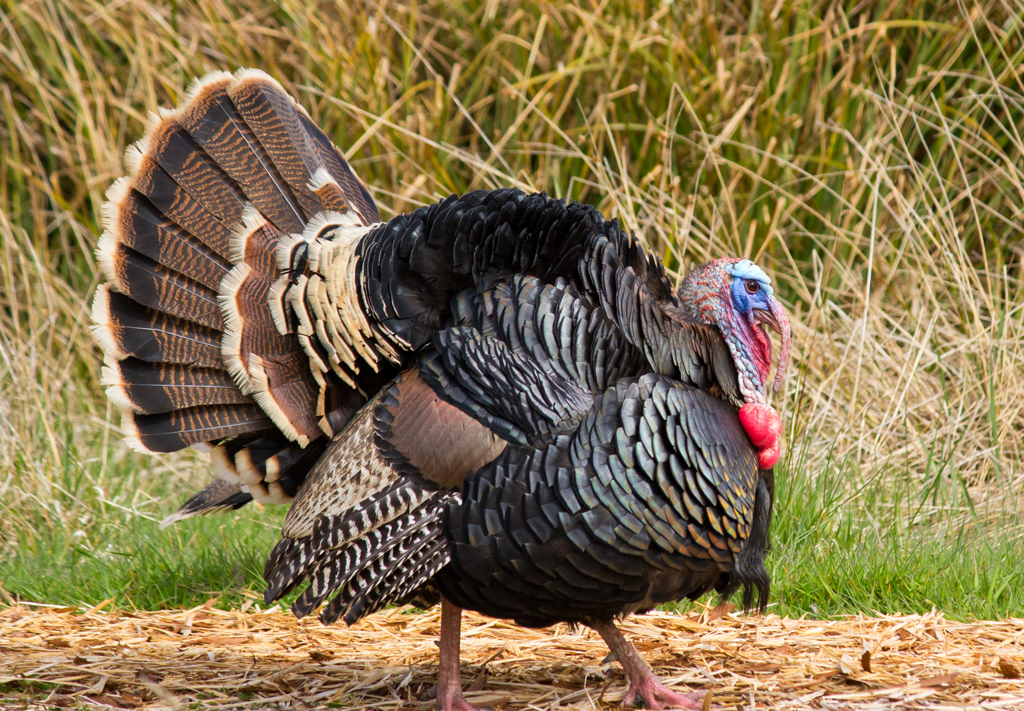
Step Four: Research. Research. Research. Location. Location. Location.
It’s worth mentioning each of these more than once because both are so elemental to making your dream a reality. Spend time learning about the area that interests you. Talk to local wildlife biologists. Read up on any recent diseases that have affected local deer, elk and bird populations and migration patterns. Google Earth, Mapright and other mapping apps are excellent tools when it comes to getting a comprehensive bird’s-eye view of the land. Invest the time upfront to ensure your purchase meets your expectations.
Step Five: Find a real estate agent who specializes in hunting properties.
This is an important one if you want your purchase and experience with the land to be successful. Real estate agents who understand the nuances of rural property ownership know which questions to ask, both of you and of the seller. Hayden Outdoors is here to help. A good and helpful agent will understand the region in which you hope to purchase hunting property and can help guide you to the ideal fit. When they discover hidden hunting benefits for your property you will be glad you went with a pro!
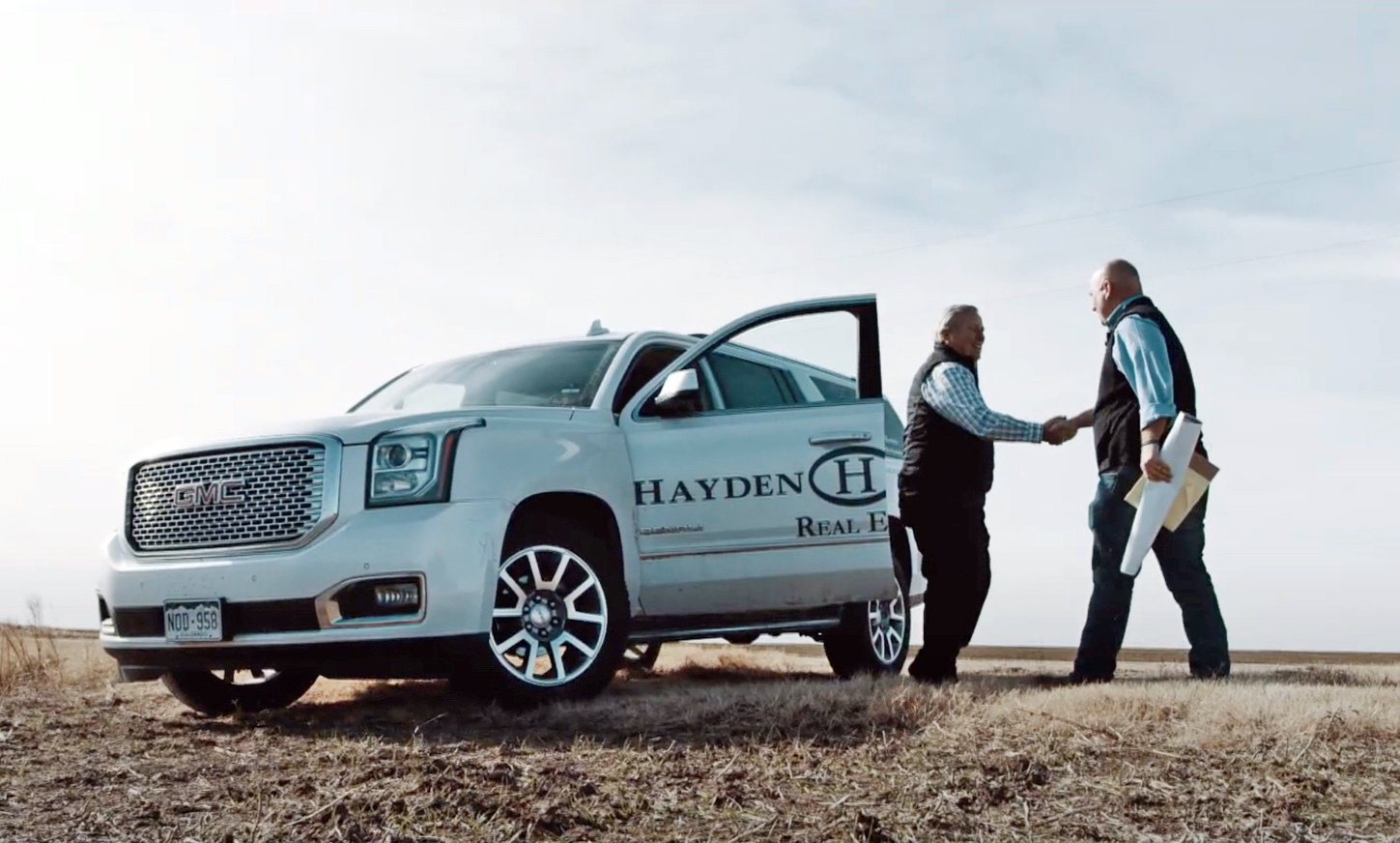
Step Six: Likewise, find a lender who specializes in rural property mortgages.
These specialists can help with the specifics of buying hunting property, including current mortgage rates and land classifications. Check out your local Farm Credit lender, Conterra Ag or Outdoor Lending. All of these sources offer great insight to financial requirements to seek lending for recreational properties.
Step Seven: Consider land improvement, revenue opportunities and security.
You might want to limit your hunting land’s use to family and friends, or, you might be looking for ways to monetize it to help offset mortgage and maintenance costs. Consider farming, land lease opportunities or if you have to, short term partnerships with local hunting outfitters for seasons you don’t plan to hunt. Small additions, fencing, cabins and hunting blinds can also add value to your property.
SECURITY TIP: Be careful on who you hire to help with land improvements to make sure they aren’t hunting the land without you knowing. A good trail camera can help keep trespassers from harvesting your future game.
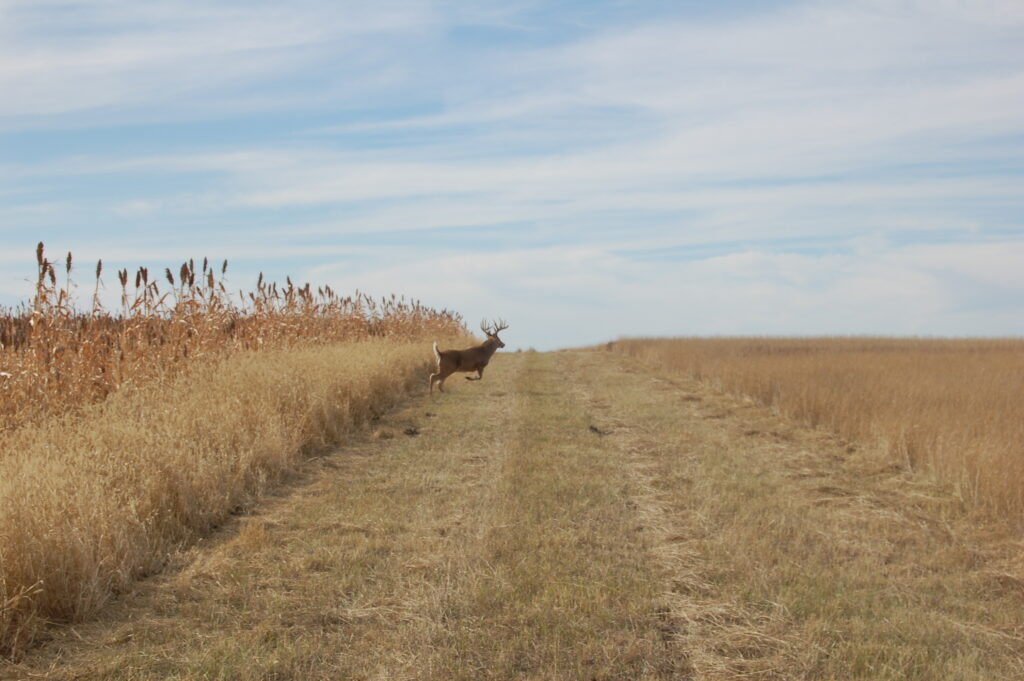
Step Eight: Enjoy!
It goes without saying, but come hunting season, it’s time to get out, explore and enjoy your new hunting property purchase. Living so closely with the surrounding environment and wildlife can be an incredibly rewarding experience. The team at Hayden Outdoors can help you find the perfect piece of land zoned for hunting or bordering public lands with hunting access.
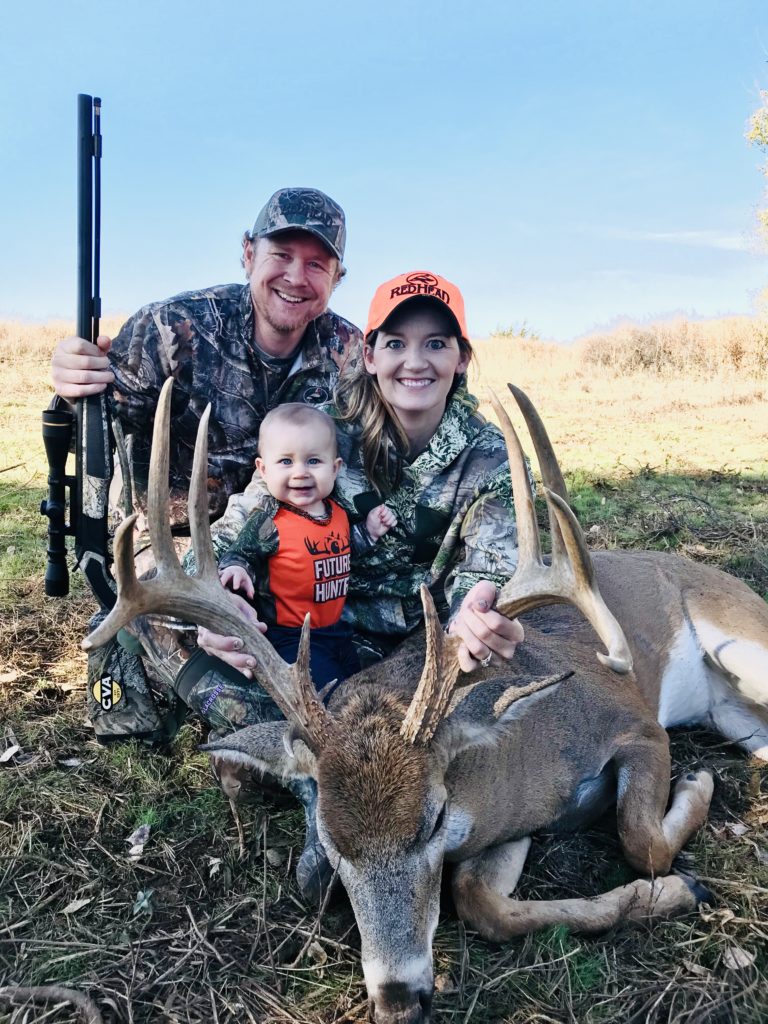
Binocular Vocabulary
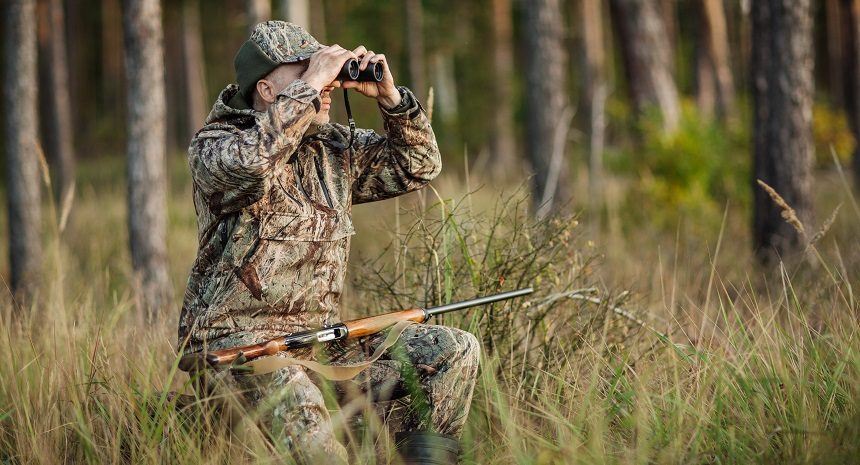
Decode Basic Technical Jargon Associated with Consumer Optics
A good pair of binoculars is a must-have for a landowner, the kind of essential gear that should always be close at hand to provide a better look at livestock and wildlife, scan for predators, or check fence conditions from afar.
“Binoculars Seem Simple Enough”
Look through the lenses and what’s far away appears close. However, when shopping for binoculars, consumers often find just enough technical lingo, rooted in the vernacular of optical engineering, to find the process intimidating. Buyers shopping for a basic set of binoculars can benefit from some decoding of the most common technical terms.
Magnification
Binoculars will be described with a set of numbers – for example, “7×35.” The first number refers to magnification; in this example, the binoculars would show the subject seven times closer than it would appear to the naked eye.
Objective Diameter
That second number – the “35” in the above example of “7×35” – refers to the lens diameter, the measurement across a binocular lens; the larger the number, the larger the lens; a larger lens allows in more light, providing for a brighter view.
Field of View
This might be described as a linear measurement, in feet or meters, or as an angle, in degrees, and indicates the width of the area that will be visible through binoculars. In general, the greater the magnifying power, the narrower the field of view.
Eye Relief
The distance between the back of the eyepieces and the user’s eyes when the user has a clear, “un-vignetted” view through the binoculars. This is a particularly important detail for users who wear glasses. As a means of reference, longer focal length generally means greater eye relief.
Image Stabilization
When using high-powered binoculars, users might struggle to keep an image steadily in view. Higher-end options can come with image-stabilization technology that helps lessen the effects of an unsteady hand. On the downside, binoculars with such technology tend to be heavier than options without it.
Anti-reflective Coating
This helps prevent a hazy, low-contrast view of a subject, caused by lenses “losing light” due to reflection.
Range-finding Capability
Look through binocular lenses and you might see a superimposed scale showing the angular height of the subject in view. With a fairly basic algebra formula, a viewer can use that scale to estimate the range, or distance, to the subject, if that subject’s height can be estimated. That formula:
Distance = (Estimated Height/angular height of object) x 1000
The Ultimate Landowner Utility
Once a landowner begins using binoculars, it can be hard to live without the utility they offer. Having a set of binoculars in the home and in every vehicle can help meet the unpredictable need to get a quick, up-close look at a trophy elk, an injured horse, a trespasser, or a distant gate that appears open. Equipped with a basic understanding of the technical specs associated with binoculars will help ensure a consumer is properly equipped.
Elk Hunting With Tree Stands

Have you ever thought of hunting for elk in a treestand? Wonder why so many whitetail hunters use a stand to harvest a big buck?
The trend of using a treestand to hunt game is as strong as ever, and the manufacturers of these stands are making big improvements to the products used in the woods. Gone are the days of the basic steel platform ratchet strapped to the side of a tree or a wood platform nailed int he crotch of an old oak. In modern hunting trends, hunters out west are utilizing strategies that east and midwest hunters have been using for years. Although using a stand on public land may be risky and expose it to potentially being stolen, if you know of a great location, then it will prove a huge key to bagging a big bull or cow elk.
Modern Treestands are Durable & Comfortable.
There are three basic types of treestands: Ladder, Climber and Lock On. From double wide stands to large platform areas, ladder stands seem to be the most comfortable, but are harder to get back to the woods, especially on public land where you have to carry it in. Lock on stands are the lightest and smallest, but you need to either use ladder pegs or stick ladders to get yourself up to the stand. Climber stands are packable but you need to carry it in and out and use it to get up and down, making them more dangerous to use. Whichever stand is the best style for you, be sure to do research online to analyize customer reviews and don’t pick the stand because of who is on the label.
Check out this video from a hunter in a treestand with bull elk below his stand.
Elk can be hunted from treestands successfully, but some key things should be done to place the stand in the right location and get in and out of the stand at the right time!
Stick to these tips when placing your treestand for elk in the woods:
- Scout out the top 3-5 locations for placing a stand in the woods. Make sure the trails are not seasonal, or are used during the season you plan to hunt.
- When scouting, place trail cameras near your top locations 1-2 months before you plan to hunt so you can find out which location is best.
- About 3-4 weeks before you plan to hunt, check the trail cameras and decide which location is being used consistently.
- Install your stand in a location where the elk will be trailing up wind from normal wind patterns. Anticipate thermals going up and downhill and place your stand to the side of the trail, not right on the trail.
- Try to make sure that the stand is not visible from the uphill side from elk trails, so they are not looking directly at you from the side of the hill.
- Make sure when the sun rises or sets, it won’t be in your eyes.
- Secure your stand, spray it down with Scent control spray, and mark the location on your GPS and on a printed map.
- Tie a small rope to the stand that can be dangled down to raise up your bow or firearm. Screw in a bow or gun holder next to your stand in the tree.
- Plan your entry and exit strategies based on elk patterns from trail camera photos.
- Make sure to use a safety vest when hunting in a treestand, ALWAYS!
- Mark a trail with reflective tabs on trees to help you find the stand in the dark with a flashlight ot headlamp.
- Do Not leave anything or drop anything at the bottom of the stand
- BE READY BEFORE LIGHT and LEAVE AFTER DARK as the elk use these trails early mornings and late evening!
- If you are on a wallow, SIT ALL DAY! These elk come to cool off on hotter days of archery and early rifle seasons.
Placement of these stands is crucial to a great hunt. Many elk hunters are successful in placing the stands:
-
Next to dark, wooded escape corridors
-
Next to wallows or frequested ponds or stream crossings
-
Next to farm croplans where trails meet the field
-
Above lateral trails
-
NOT in bedding areas
-
NOT in wide open or sparsely wooded areas
-
NOT on the downside of a lateral side trail
The next time to decide to go back to the woods, think about using a tree stand to hunt for elk. As you can see it takes some learning, research and time in the woods. But, with the proper use of treestands, you can take that bull of a lifetime, especially one that would never give you a shot in a wide open meadow!
Example of Treestand style, by Ameristep: Lock On, Climber and Ladder Stands






















